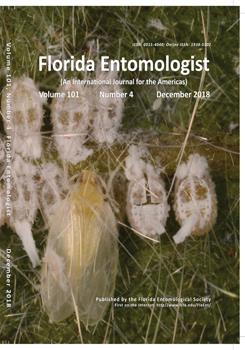Salpingogaster nigra is a promising species for biological control of the spittlebug Mahanarva spectabilis Distant (Hemiptera: Cercopidae). This study determined the biology of the immature stage, as well as aspects of S. nigra adult behavior. Female fertility, egg viability, and the duration and viability of the larval and pupal stages were evaluated. Behavioral aspects were studied by the olfactory response of mated females, with a Y-type olfactometer. We assessed predator response to spittlebug nymphs vs. clean air; spittlebug nymphs vs. spittlebug foam, and spittlebug foam vs. clean air. Female fecundity reached 25.1 ± 6.1 (SE) eggs per female per d, and egg viability was 64.0% ± 4.5%. Duration and viability of the larval period were 10.5 ± 0.4 d and 10.0 ± 2.1%, respectively. Duration of the pupal stage was 10.7 ± 0.2 d, and viability was 88.1% ± 5.1%. Significant preference was observed for odors from nymphs in contrast to clean air. Results show that although S. nigra adults, eggs, and pupae may be kept in the laboratory, the mass breeding of the predator presently is not feasible due to low larval viability.
How to translate text using browser tools
1 December 2018
Biology and Olfactory Response of Salpingogaster nigra Schiner (Diptera: Syrphidae)
Bruno Antônio Veríssimo,
Alexander Machado Auad,
Sandra Elisa Barbosa Silva,
Giani Batista da Silva

Florida Entomologist
Vol. 101 • No. 4
December 2018
Vol. 101 • No. 4
December 2018
Brachiaria
pasture
predator




